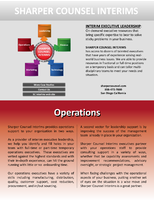Pilz Automation System PSS 4000 Release 13 Brings Greater Value
The automation system, PSS 4000 from Pilz continues to deliver extra benefits designed to give you even greater value.
The automation system, PSS 4000 from Pilz continues to deliver extra benefits designed to give you even greater value. The function "non-persistent online change" now means that individual changes in user programs can be transferred to the control system. Pilz has made this function available in the automation system PSS 4000 for safety applications. Users save time during commissioning because the entire program does not need to be compiled and loaded to the PSS 4000 hardware. This new function is part of Release 13 of the automation system PSS 4000. Other new features include a device interface for communication with PROFINET networks.
User programs and software blocks of a control system are often only put through final testing during commissioning, during which they undergo multiple modifications. The "non-persistent online change" function now allows individual changes to be fed into one or more control systems of the automation system PSS 4000 without it being necessary to compile and load the entire program. One entirely new feature is that this function is now also available for safety-related applications.
The changes are fed in without stopping the control system - the new program becomes active on the head modules with the next possible clock cycle after downloading.
The changes apply for a maximum of 12 hours or until the control system is next restarted, so they are not permanent (non-persistent). If the changes are not accepted, the control system re-establishes the status of the last complete download. As well as simplifying and accelerating commissioning, the function improves the handling of safety in hectic commissioning processes.
The "non-persistent online change" function is available for all control systems of the automation system PSS 4000. Pilz thus advances the convergence of safety and automation in automation systems: the user works with a single tool for both spheres. It is available for use from the new firmware Release 13.
The automation system, PSS 4000 from Pilz continues to deliver extra benefits designed to give you even greater value. The function "non-persistent online change" now means that individual changes in user programs can be transferred to the control system. Pilz has made this function available in the automation system PSS 4000 for safety applications. Users save time during commissioning because the entire program does not need to be compiled and loaded to the PSS 4000 hardware. This new function is part of Release 13 of the automation system PSS 4000. Other new features include a device interface for communication with PROFINET networks.
User programs and software blocks of a control system are often only put through final testing during commissioning, during which they undergo multiple modifications. The "non-persistent online change" function now allows individual changes to be fed into one or more control systems of the automation system PSS 4000 without it being necessary to compile and load the entire program. One entirely new feature is that this function is now also available for safety-related applications.
The changes are fed in without stopping the control system - the new program becomes active on the head modules with the next possible clock cycle after downloading.
The changes apply for a maximum of 12 hours or until the control system is next restarted, so they are not permanent (non-persistent). If the changes are not accepted, the control system re-establishes the status of the last complete download. As well as simplifying and accelerating commissioning, the function improves the handling of safety in hectic commissioning processes.
The "non-persistent online change" function is available for all control systems of the automation system PSS 4000. Pilz thus advances the convergence of safety and automation in automation systems: the user works with a single tool for both spheres. It is available for use from the new firmware Release 13.
Communication stack for PROFINET
Other new features in Release 13 include the device interface for communication with PROFINET networks. Pilz has integrated PROFINET into the devices as a communication stack. This cuts inventory costs and reduces the range of types because this approach makes it possible to use the same hardware to operate different communication connections, including UDP RAW, Modbus/TCP, Ethernet/IP and now also PROFINET, merely with a change in the configuration. Users do not need a specific device type - one PLC head module can be used for universal access to the various communication systems.
Other new features in Release 13 include the device interface for communication with PROFINET networks. Pilz has integrated PROFINET into the devices as a communication stack. This cuts inventory costs and reduces the range of types because this approach makes it possible to use the same hardware to operate different communication connections, including UDP RAW, Modbus/TCP, Ethernet/IP and now also PROFINET, merely with a change in the configuration. Users do not need a specific device type - one PLC head module can be used for universal access to the various communication systems.
For more information, contact:
Felicia Caponi, Marketing Manger
Pilz Automation Safety, L.P.
Phone: +1 734-392-0211
f.caponi@pilzusa.com




